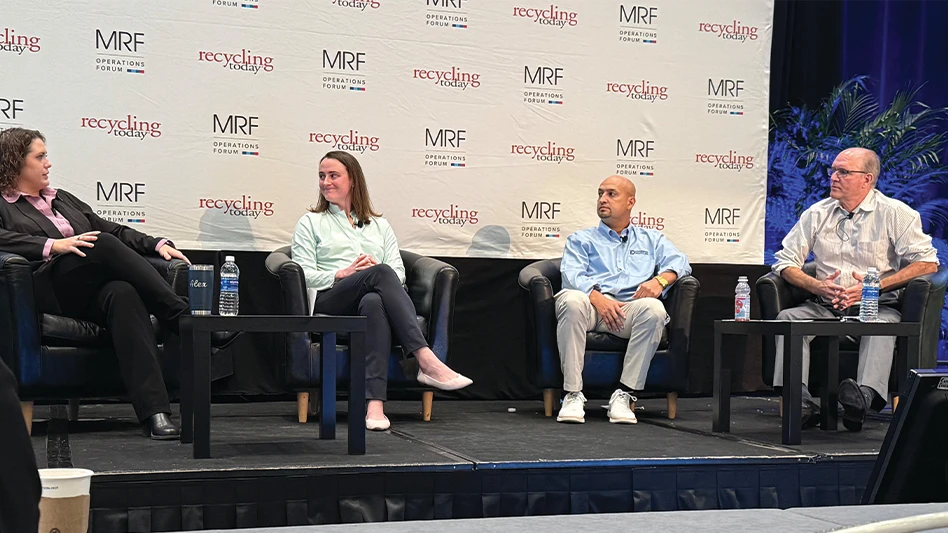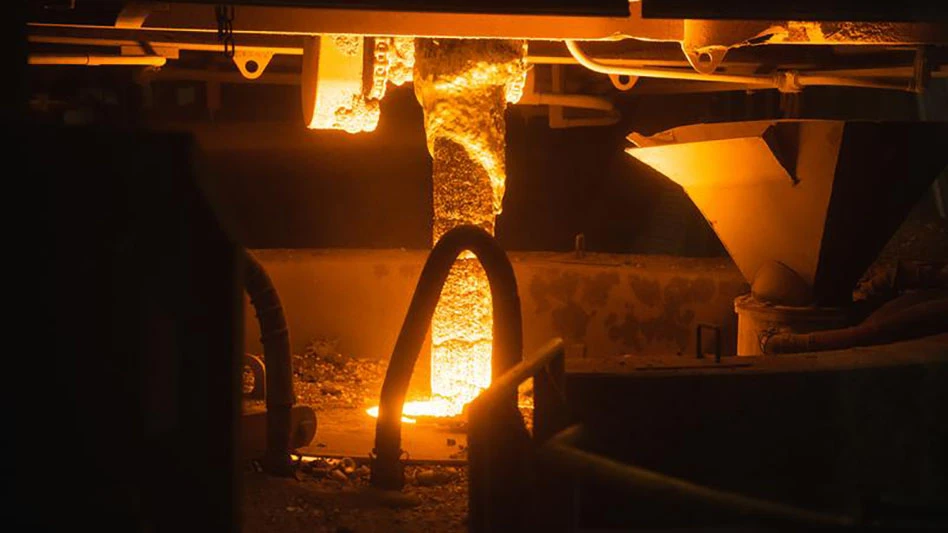
© Carsten Reisinger - stock.adobe.com
Third-quarter earnings for Cleveland-Cliffs Inc. are down compared with earnings for the third quarter of 2021. The company, which is a flat-rolled steel producer based in Cleveland, has reported third-quarter consolidated revenue of $5.7 billion compared with $6 billion in the third quarter of 2021.
For the third-quarter of the year, Cleveland-Cliffs has reported net income of $165 million, or 29 cents per diluted share, compared with net income of $1.3 billion, or $2.33 per diluted share, in the third quarter of 2021.
For the first nine months of the year, Cleveland-Cliffs has achieved $17.9 billion in revenue and $1.6 billion in net income, or $2.95 per diluted share, as of Sept. 30. For the first nine months of 2021, the company reported $15.1 billion in revenue and $2.1 billion in net income, or $3.69 per diluted share.
Cleveland-Cliffs says third-quarter adjusted earnings before interest, taxes, depreciation and amortization (EBITDA) was $452 million compared with adjusted EBITDA of $1.9 billion in the third quarter of 2021. For the first nine months of the year, the company has achieved adjusted EBITDA of $3 billion compared with $3.8 billion for the same time frame in 2021.
“Our third-quarter results were affected by the delayed inventory impact of higher input costs and maintenance activities from prior periods,” says Lourenco Goncalves, chairman, president and CEO of Cleveland-Cliffs. “Now that all major projects have been concluded and production levels are back to normal, we expect costs to decline meaningfully into Q4 and further into 2023.”
Goncalves adds that shipments to the company’s automotive clients improved in the third quarter of the year, “achieving a level among the highest in six quarters.”
He says, “That allowed us to hold sales volumes steady in Q3, despite much weaker service center activity. We expect this positive trend in automotive shipments to continue into Q4, with the added benefit of improved pricing from our successful renewal of contracts pertaining to the October cycle. As the automotive industry increases production, supply on the spot trade should tighten. That supports pricing going forward.”
According to Cleveland-Cliffs’ earnings report, third-quarter steel product sales volumes of 3.6 million net tons consisted of 33 percent coated steel, 29 percent hot-rolled steel, 15 percent cold-rolled steel, 6 percent plate, 5 percent stainless and electrical and 12 percent other, including slabs and rail. Steelmaking revenue of $5.5 billion included $1.7 billion, or 31 percent, of direct sales to the automotive market; $1.5 billion, or 27 percent, of the sales to the distributors and converters market; $1.5 billion, or 27 percent, of sales to the infrastructure and manufacturing market; and $847 million, or 15 percent, of sales to steel producers.
The company says third-quarter steelmaking unit costs increased compared with the second quarter of this year due to the lagged effects of higher cost inventory produced in prior periods, impacted by elevated repair and maintenance expenses and lower production volume, as well as higher costs in natural gas, electricity, scrap and alloys.
Goncalves says the most important event of Cleveland-Cliffs’ third quarter was its ratification of labor agreements with the company’s United Steelworkers- (USW-) represented employees.
In conjunction with the newly ratified labor agreements with the United Steelworkers, Cleveland-Cliffs has remeasured its associated pension/other post-employment benefits (OPEB) plan assets and obligations. Cleveland-Cliffs says its pro forma pension/OPEB liabilities, net of assets, were reduced by $1.8 billion, or 63 percent, since the last remeasurement Dec. 31, 2021. The company says the reduction is due primarily to lower health care premiums negotiated separately from the labor agreements. Due to ratification timing, the full impact of the agreements was not reflected in these earnings. Cleveland-Cliffs says it expects cash flow requirements related to OPEB plans to be reduced by more than $100 million annually, or about 50 percent, going forward.
Goncalves adds that the company used its size to negotiate better health care rates for retirees.
“It is well-known that the assumption of pension and OPEB liabilities at the time of the acquisition was the main source of enterprise value we leveraged in order to acquire the U.S. assets from ArcelorMittal in December 2020,” Goncalves says. “Fast forward, our combined total balance of $4.2 billion in liabilities following the acquisition has been made irrelevant, as we now have only $1.1 billion remaining on the books. We also concurrently renegotiated lower health care premiums for our non-USW retiree plans, which have not been remeasured yet. The remeasurement of these non-USW plans will happen at year end, when we expect the total pension and OPEB liabilities to be even lower than what is shown in the pro formas at this time.”
Fourth-quarter outlook
Based on the current futures curve for the year, which implies an average hot-rolled coil steel index price of $730 per net ton for the remainder of the year, Cleveland-Cliffs says it expects its full-year average selling price to be about $1,370 per net ton. Reduced repair and maintenance costs, higher production volume and lower energy and raw material costs are expected to drive steelmaking unit operating costs at least $80 per net ton lower in the fourth quarter.
“Going forward, in Q4, we expect total volumes to increase as a result of further improved automotive, service center and slab demand,” said Celso Goncalves, executive vice president and chief financial officer of Cleveland-Cliffs during the company’s third-quarter earnings call Oct. 25. “On the pricing side, our sequentially lower average selling price was driven by the index-linked portion of our business with declines in the hot-rolled, cold-rolled and slab indices. We also had declines in EBITDA for our third-party pellet and scrap businesses as a result of lower pricing. Looking into the fourth quarter, the improvements we achieved on the contractual fixed prices that reset in October will help to mitigate the lagged impact of continued falling index prices, but a product mix heavier in slabs and HRC will be a negative factor on our realized price.”
Latest from Recycling Today
- AF&PA releases 2023 paper recycling rate, unveils new methodology
- ARA names new president
- Aurubis invests in Lünen, Germany, site
- ILA, USMX negotiations break down
- Van Dyk hires plastics industry vet to expand footprint in PRF sector
- Li-Cycle closes $475M loan with DOE
- Report highlights consumer knowledge gaps in lithium battery recycling
- AMP names CEO





